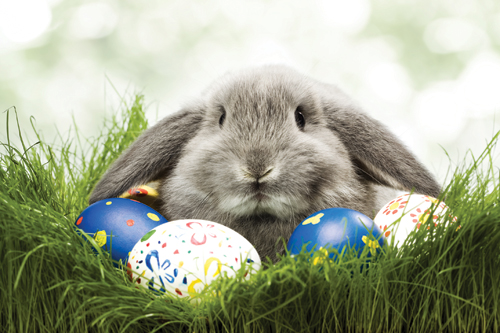 |
|
| PHOTO: Shutterstock | |
Why do people eat chocolate rabbits and hunt for eggs at Easter? City News investigates.
If you have trouble finding any coherent link between the resurrection of Jesus and egg-laying rabbits, relax. There isn’t one—not really.
The modern Easter holiday celebration abounds with egg hunts and chocolate rabbits—it is actually a Frankenstein of many different traditions.
Easter retains some Jewish roots. In Spanish, Easter is known as Pascua; in French, Paques. These words are derived from the Greek and Latin Pascha, meaning Passover. Easter has close links with the Passover celebrations, seeing as Jesus’ crucifixion and resurrection occurred after He went to Jerusalem to celebrate Passover (Pesach in Hebrew), the Jewish festival commemorating the ancient Israelites’ exodus from slavery in Egypt.
Today, the Pesach has come to mean Easter for most, except for orthodox Jews who celebrate it solely as Passover.
The timing of Easter is apparently related to pagan traditions. The early Christian church at the Council of Nicea in 325 A.D. decreed that Easter must closely follow the Spring equinox, the way pagan Spring festivals do.
The name itself, Easter is not found in the Bible. In fact, most sources agree the name is likely to have sprung from Eostre or Eastre, a Teutonic (or ancient German) goddess of Spring and fertility. Which would also explain the myth of the Easter bunny perfectly because Eostre’s symbol was, you guessed it, a rabbit.
A symbol of fertility, the rabbit later found its way into American Easter traditions when Germans settled in Pennsylvania in the 1700s, bringing with them tales of the osterhase, the mythical egg-laying rabbit responsible for all the colored eggs showing up each Easter. (City kids will, however, tell you that Easter eggs come from Cadbury’s.)
Long before Easter was celebrated, it’s said that many cultures were already exchanging eggs, which represent rebirth. Early Christian missionaries had to celebrate their own holy days in a clandestine manner with the then prominently pagan tribes of Europe, hence the meshing of pagan cultures with Christian ones. Early Greek and Syrian Christians dyed their eggs crimson to represent the blood of Christ.
All said, Spring is a meaningful time to celebrate the resurrection of Jesus—the season symbolizes new life after death (winter).
Biblical accounts follow that the Sunday after his death on the cross, Jesus’ gravesite was visited by mourning women, only to find the tomb empty. Later that day and for 40 days after, many encounters with and sightings of Jesus alive gave His followers cause to believe that He had been risen from the dead by the power of God.
The resurrection of Christ is great significance in the Christian religion; it is the central justification for the Christian faith and walk. Romans 4:25 explains that, “Jesus was put to death for our trespasses and raised for our justification.”
This pivotal event is the basis of the Christian belief that humans need no longer live under the dominion of death or the power of sin. Romans 6:9-11 explains, “For we know that since Christ was raised from the dead, he cannot die again; death no longer has mastery over Him. In the same way, count yourselves dead to sin but alive to God in Jesus Christ.” And on that is what hangs the hope of every Christian around the world today.
So if you are looking for an Easter goodie that’s free of pagan roots, have a hot cross bun. Originating in English, the bun has a white cross in the middle, signifying Jesus.
